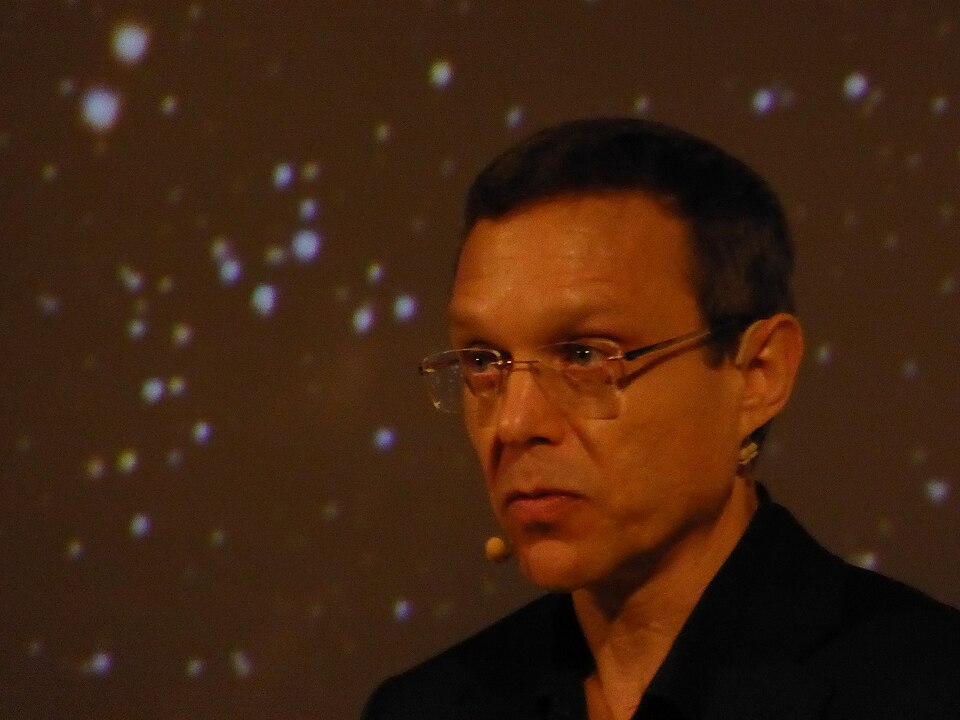
Professor Avi Loeb, Harvard's perpetually controversial astrophysicist and head of the Galileo Project, has extended an open invitation to the reality TV mogul to join his research team. And whilst this might sound like a publicity stunt dreamt up by someone with too much time on their hands, it's actually a pointed jab at NASA's rather peculiar approach to transparency.
The whole thing kicked off when Kardashian tweeted on October 30th: "Wait…. what's the tea on 3I Atlas?!?!!!!!!!?????" A perfectly reasonable question, albeit phrased in the sort of breathless caps-heavy style that social media seems to demand these days.
"Wait…. what's the tea on 3I Atlas?!?!!!!!!!?????"
Within hours, Sean Duffy, NASA's acting administrator, responded with a detailed explanation: "Great question! NASA's observations show that this is the third interstellar comet to pass through our solar system. No aliens. No threat to life here on Earth."
He even broke down the nomenclature for her: "3 = the third. I = interstellar, meaning from beyond our solar system. ATLAS = discovered by our Asteroid Terrestrial-Impact Last Alert System (ATLAS) team." Duffy finished with a flourish, inviting Kardashian to witness the Artemis launch at Kennedy Space Center.
All very nice and accommodating. Except here's the rub: on that very same day, Congresswoman Anna Paulina Luna submitted an official letter to Duffy requesting NASA release the high-resolution images of 3I/ATLAS taken by the HiRISE camera aboard the Mars Reconnaissance Orbiter. These images, captured on October 2-3 when the object passed within 30 million kilometres of Mars, offer roughly three times better resolution than the best Hubble images.
Luna's letter? Still unanswered. Loeb's own request to Alfred McEwen, the Principal Investigator of the HiRISE camera team? Radio silence.
You can see why Loeb might be a touch irritated.
In a blog post cheekily titled "Kim Kardashian is Welcome to Join my Research Team on 3I/ATLAS," Loeb laid out his frustration whilst simultaneously extending a genuine (if somewhat pointed) offer. He wrote that he would "love to bring Kim Kardashian up to date regarding all the anomalies we know so far about 3I/ATLAS."
During a NewsNation interview with Natasha Zouves, the subject came up again. The interviewer suggested, perhaps half-jokingly, that they should get Kardashian to ask NASA their questions since she's clearly more likely to receive a response. It's funny because it's true—and also rather damning.
Loeb's invitation isn't really about whether Kardashian has the astrophysics credentials to analyse interstellar objects (she doesn't, obviously). It's about making a point: if a celebrity with 75 million followers can get NASA's acting administrator to respond within hours, why are scientists and elected officials being stonewalled?
"The dissemination of scientific information should not be held hostage to the politics of the government shutdown,"
Loeb wrote, before adding: "Congress members and scientists also deserve a prompt response to their inquiries."
Fair point, that.

For those just tuning in, 3I/ATLAS is only the third confirmed interstellar object ever detected passing through our solar system, following 'Oumuamua in 2017 and 2I/Borisov in 2019. But unlike its predecessors, 3I/ATLAS is behaving in ways that have astronomers genuinely scratching their heads.
Loeb has catalogued several statistical anomalies that strain the boundaries of coincidence. Its retrograde trajectory aligns within five degrees of the ecliptic plane—the plane in which Earth and other planets orbit the Sun—with a likelihood of just 0.2%. During July and August, it displayed a sunward jet (what scientists call an "anti-tail") that pointed towards the Sun rather than away from it, defying typical cometary behaviour.
Perhaps most intriguingly, as 3I/ATLAS approached perihelion (its closest point to the Sun) on October 29-30, it brightened faster than any known comet and turned strikingly blue—bluer than the Sun itself. Its composition is odd too: rich in nickel but with very little iron and only about 4% water by mass. Comets, as a rule, are rather wet affairs.
The object is also absolutely massive—roughly a million times more massive than 'Oumuamua and a thousand times more massive than 2I/Borisov, whilst moving faster than both.
Loeb has suggested that if 3I/ATLAS doesn't produce a massive debris cloud as it emerges from the Sun's glare in November and December, then its non-gravitational acceleration might indicate something other than natural outgassing. Something like, say, propulsion.
"Science is guided by data and data should flow seamlessly among scientists, unaffected by the politics of the day,"
Loeb wrote in his Medium post—a statement that's hard to argue with, whatever one thinks of his more exotic hypotheses.
Now, there's a legitimate argument that Duffy responded to Kardashian because she has millions of followers and addressing public curiosity from someone with that reach makes sense from a communications standpoint. But the optics are rather unfortunate when scientists requesting the exact same information through proper channels are left hanging.
Critics on social media have been less than kind. One user noted that Duffy "will go down in history as the one who never answered Avi Loeb's request to release pictures from 3I/ATLAS taken by HiRise camera orbiting Mars but swiftly responded to Kim Kardashian's concerns about the matter."
Duffy was appointed NASA's acting administrator just eight days after 3I/ATLAS was discovered, which has led to its own conspiracy theories—though probably unfounded ones. More likely, it's simply a case of bureaucratic inertia combined with the complications of a government shutdown. Still, when your agency's transparency looks selective based on celebrity status, it's not a particularly good look.
3I/ATLAS will make its closest approach to Earth on December 19, 2025, passing roughly 170 million miles away—so we're not in any immediate danger, alien propulsion system or not. The real test, according to Loeb, will be what we observe in the coming weeks. If there's a massive gas and dust cloud indicating significant mass loss (as you'd expect from a comet that's lost a sixth of its mass), then it's probably just an unusual natural object. If there isn't, well, the conversation gets considerably more interesting.
Whether Kim Kardashian actually takes up Loeb's invitation remains to be seen. But in a strange way, her casual question has done more to highlight the transparency issues around 3I/ATLAS than months of formal scientific requests have managed.
Sometimes, apparently, you need a reality TV star to ask the questions the rest of us have been shouting into the void.
